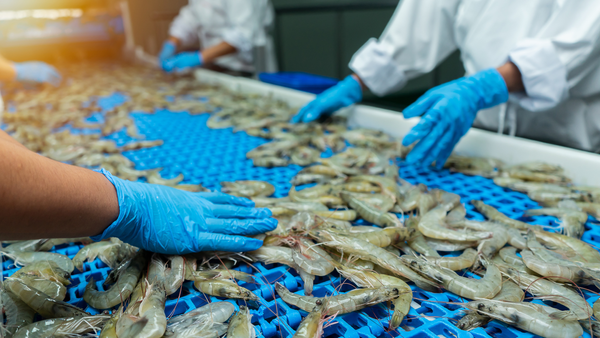Why We Can't Stop Buying Russian Seafood

In my first year of college I heard that Big Coffee was pushing small roasters out of business and self-imposed a ban, going out of my way (and budget) to buy coffee exclusively from small vendors. One day I asked a barista about their beans and was shocked by the response: "We buy them from Starbucks." I had made a very wrong assumption that small vendors sourced beans locally and assumed for years that my 1-woman boycott, however small, was making a difference. It seems the US is in need of a similar wake-up call on our assumptions around seafood sourcing and trade enforcement if bans are going to have their intended impact.
Last March, President Biden announced a ban on imports of Russian-origin seafood. This is done by reviewing the Country of Origin, which every product has to list. Here's the problem: Country of Origin doesn't refer to where a product was originally sourced. It is defined as "the country of manufacture, production, or growth of the article", meaning it tells you where a product was last transformed. It is completely legal to process Russian-harvested seafood in a secondary country and send it on to the US. Here's how it works:

This phenomenon was detailed in a 2021 Report to Congress where NOAA used Seafood Import Monitoring Program data - which requires harvest details for ~45% of seafood imports - to unmask cod supply chains. It found that China was the Country of Origin for nearly half of all cod imports (Russia had only 5%), but the top countries harvesting cod imported to the US were actually Russia (24%), the US (18%) and Iceland (17%). It is clear that examining only the Country of Origin allows a lot of Russian-caught seafood to be imported without detection. There have been calls from politicians and advocacy groups to require harvest information for additional imported seafood products so the US can more effectively ban Russian seafood, presumably by expanding the ban to include Russian-caught seafood processed in another country.
It isn't our role as trade compliance screening software developers to weigh in on what trade bans should or shouldn't exist - we just help industry efficiently navigate this increasingly complex regulatory environment. That said, we think it is important to validate the assumption that more data = better implementation. Is the US using the sourcing information it already receives from trade regulations like the Seafood Import Monitoring Program to track imports of Russian-harvested seafood? We don't know, because the executive branch refused to participate in a Congressional oversight hearing where government officials would have been questioned on this topic. If efforts move forward to collect more data on sourcing we hope it is done with a clear operational plan so industry is not forced collect and report data that the government either can't or won't leverage to protect US businesses and consumers.





